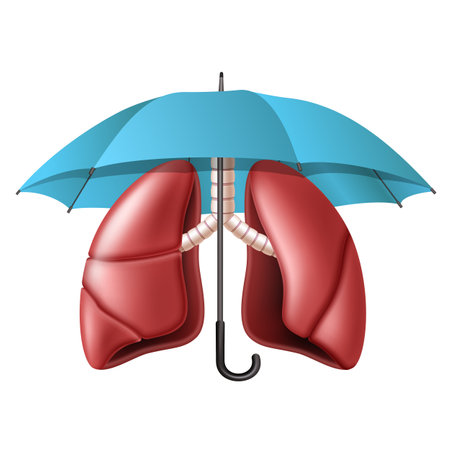Understanding Blue Light and Its Impact
Blue light is a type of visible light with a short wavelength, which makes it more energetic than other colours in the spectrum. In British households, blue light is predominantly emitted from digital screens such as smartphones, laptops, tablets, and televisions, as well as from energy-efficient LED and fluorescent lighting found throughout our homes. While sunlight is the main natural source of blue light during daytime hours, the growing prevalence of artificial sources means we are exposed to significant amounts of blue light even after sundown. This has raised concerns among health professionals in the UK, particularly regarding its effect on our eyes and sleep patterns. Prolonged exposure to blue light can contribute to digital eye strain—commonly referred to as computer vision syndrome—which is characterised by symptoms like dry eyes, headaches, and blurred vision. Moreover, studies have shown that excessive blue light exposure during the evening can disrupt the body’s natural circadian rhythm by suppressing melatonin production, leading to difficulty falling asleep or experiencing restful sleep. With many Britons working from home or spending increased leisure time on devices, understanding the implications of blue light is an important first step towards making informed choices that support long-term eye health and wellbeing.
2. Evaluating Blue Light Sources in the Home
Before implementing strategies to reduce blue light exposure, it is essential to identify where this type of light originates within a typical British household. Many everyday electronic devices and lighting solutions contribute to the overall blue light exposure experienced by families across the UK. Recognising these sources helps prioritise practical interventions tailored to each home environment.
Common Household Blue Light Emitters
Several popular devices and fittings found in British homes are significant sources of blue light. Below is a summary highlighting the most prevalent items:
| Item | Typical Usage | Blue Light Emission Level |
|---|---|---|
| Televisions | Evening entertainment, news viewing | High (especially LED/LCD models) |
| Smartphones & Tablets | Communication, browsing, social media, gaming | High (particularly during prolonged use) |
| Laptops & Desktop Computers | Remote work, online learning, streaming | High (extended screen time increases risk) |
| LED Lighting (bulbs & fixtures) | Main indoor lighting source in modern homes | Moderate to High (varies by bulb specification) |
| Game Consoles & Portable Devices | Youth entertainment, gaming sessions | Moderate to High (depends on screen size/type) |
| Smart Watches & Fitness Trackers | Health monitoring, notifications | Low (but close proximity can increase impact) |
The Prevalence of LED Technology in the UK
The adoption of energy-efficient LED bulbs and screens has increased rapidly throughout the UK due to environmental and cost-saving initiatives. However, LEDs typically emit more blue light than traditional incandescent bulbs or older display technologies. This means that while households benefit from reduced energy bills, they may inadvertently experience higher levels of blue light exposure.
Cultural and Lifestyle Considerations
Binge-watching television series on dark winter evenings or scrolling through social media before bed are common habits in many British homes. These routines often extend screen time late into the night, intensifying exposure to artificial blue light at hours when the body naturally expects darkness. Recognising how these cultural patterns interact with technology usage is crucial for crafting effective reduction strategies tailored for UK households.

3. Adjusting Screen Time and Usage Habits
One of the most effective strategies for reducing blue light exposure in British households is to rethink how screens are used on a daily basis. Establishing clear boundaries around device usage not only helps manage blue light but also encourages healthier digital habits, particularly among children. For families, it can be beneficial to implement digital detox periods—set times during the day or week when all electronic devices are put aside. For example, consider designating meal times or the hour before bedtime as tech-free zones. These breaks from screens help eyes recover and promote better sleep routines.
Additionally, being mindful about device usage means encouraging purposeful rather than passive screen time. Parents might support children in choosing educational content over endless scrolling or binge-watching. Setting up a family agreement on daily screen limits, tailored to each member’s age and needs, can foster accountability and consistency. In British homes where rainy weather often leads to more indoor activities, replacing some screen time with board games, reading, or crafts keeps everyone engaged without increasing blue light exposure.
Ultimately, open conversations about why managing screen time matters—linking it to eye health, sleep quality, and wellbeing—will help reinforce positive habits across all generations. By approaching device usage mindfully, British families can reduce unnecessary blue light exposure while still enjoying the benefits of technology.
4. Adopting Blue Light Filtering Solutions
Reducing blue light exposure in British households can be both practical and accessible thanks to a variety of products and settings now widely available in the UK market. Homeowners and renters alike have a growing array of options, ranging from wearable tech to built-in device features. Here’s an overview of some popular solutions currently adopted across the country.
Blue Light Glasses
Blue light blocking glasses have become a familiar sight in high street opticians such as Specsavers and Boots Opticians, as well as online retailers like Glasses Direct. These glasses are designed to filter out a significant proportion of blue light emitted by digital screens, making them particularly useful for those working long hours on computers or late-night TV viewers. They come in prescription and non-prescription variants, catering to all age groups.
Screen Filters
Screen filters are physical attachments for laptops, monitors, tablets, and even smartphones. They not only reduce blue light but also offer added privacy and protection against scratches. In the UK, leading electronics retailers like Currys and Argos stock a range of these filters compatible with most popular devices. Installation is usually straightforward, making this an easy DIY upgrade for any household.
Device Night Modes
Most modern devices now feature built-in night or eye comfort modes. This software-based solution automatically adjusts screen colour temperature towards warmer tones during evening hours, effectively reducing blue light emission. Below is a summary of how to activate these settings on commonly used devices in British homes:
| Device | Feature Name | How to Enable |
|---|---|---|
| Windows PC | Night Light | Settings > System > Display > Night light |
| Mac | Night Shift | System Preferences > Displays > Night Shift |
| iPhone/iPad | Night Shift | Settings > Display & Brightness > Night Shift |
| Android Phones | Eye Comfort/Night Mode | Settings > Display > Eye comfort/Night mode |
| Smart TVs (various brands) | Blue Light Reduction/Eye Comfort Mode | Settings > Picture > Eye Comfort/Blue Light Reduction (if available) |
The Practical Approach: Combining Solutions
No single solution fits every scenario—many British households benefit from combining hardware (like glasses or filters) with software adjustments (night modes). For example, using blue light glasses during work hours and enabling night mode on devices after sunset can significantly reduce overall exposure without disrupting daily routines. Parents may also consider these layered strategies for children’s devices to promote better sleep hygiene.
Sourcing Products in the UK
The convenience of next-day delivery from major UK online retailers ensures that most households can trial and adopt these solutions quickly. Local opticians are also increasingly knowledgeable about blue light filtering technologies and can offer tailored advice.
A Note on Efficacy and Habitual Use
While these solutions are effective, their success depends on consistent use and proper configuration. Establishing daily habits—such as activating night mode at sunset or routinely wearing blue light glasses during prolonged screen time—helps maximise benefits for all members of the household.
5. Optimising Home Lighting
One of the most practical strategies for reducing blue light exposure in British households is to optimise your home lighting setup. Many UK homes traditionally rely on cool, bright bulbs that emit a significant amount of blue light, particularly in kitchens and living rooms. By swapping these out for warmer-toned LED bulbs—often labelled as “soft white” or “warm white”—you can significantly cut down on unnecessary blue light in the evenings. This is especially beneficial during the long, darker months when artificial lighting is used more extensively across the country.
Adjustable smart lighting has become increasingly popular in the UK, with brands like Philips Hue and Hive offering bulbs that can be tuned from cool to warm tones via smartphone apps or voice assistants. These systems allow you to create evening routines with softer, warmer lighting, better supporting your natural circadian rhythm and promoting restful sleep. Setting up schedules for dimmer, warmer lighting after sunset is a simple yet effective way to adjust your environment to suit your needs and the time of day.
It’s also worth making the most of natural daylight, which can be a challenge given Britain’s famously unpredictable weather. Whenever possible, keep curtains open during daylight hours and arrange furniture to maximise exposure to natural sunlight—this not only reduces reliance on artificial lights but also supports overall wellbeing. On grey days, consider using daylight-simulating lamps with low blue light output as a supplementary measure. By thoughtfully combining warmer bulbs, smart technology, and clever use of available daylight, British households can create healthier, more comfortable environments while keeping blue light exposure in check.
6. Promoting Healthy Evening Routines
Encouraging healthy habits in the evening is an effective way to minimise blue light exposure and promote better sleep, all while aligning with cherished British cultural traditions. Instead of defaulting to televisions, tablets, or mobile phones after sunset, households can benefit from time-honoured routines that help everyone wind down. For example, dedicating time to reading a physical book—whether it’s a gripping crime novel or a classic from the likes of Jane Austen—offers both relaxation and a welcome break from screens. This simple pleasure continues to be a staple in many British homes and provides an opportunity for quiet reflection or family bonding.
Another culturally resonant activity is tuning into the radio. Whether it’s enjoying a drama on BBC Radio 4, catching up on the news, or unwinding with late-night jazz, listening to the radio fosters a calming atmosphere without the harsh glare of screens. Similarly, engaging in gentle conversation over a cup of herbal tea, working on a puzzle, or jotting thoughts into a journal are all activities that support winding down and reduce reliance on electronic devices.
Establishing an evening routine might also involve dimming household lights or using lamps with warmer tones as dusk approaches—echoing the cosy ambience often favoured in British interiors. These habits not only support good sleep hygiene but also reinforce connections among household members, helping everyone transition smoothly towards bedtime while limiting blue light exposure.
7. Educating the Household
Open, honest communication plays a pivotal role in reducing blue light exposure within British homes. Encouraging dialogue between family members about the potential health benefits of limiting screen time and adopting blue light reduction strategies ensures everyone is informed and involved. For adults, sharing research-backed advice on how blue light impacts sleep quality, eye comfort, and overall wellbeing can foster a more mindful approach to device usage. Meanwhile, children benefit from age-appropriate explanations that highlight the importance of taking regular breaks from screens—perhaps with the aid of fun timers or shared activities like reading together before bed. Hosting a family discussion or even creating household guidelines—such as “no screens at the dinner table” or “device-free hour before bedtime”—can help embed these practices into daily routines. Additionally, involving everyone in setting up screen filters, adjusting lighting settings, and selecting evening activities that do not revolve around digital devices can turn blue light reduction into a collaborative and positive experience. By making education a household priority and nurturing ongoing conversations, British families can cultivate healthier habits that support both short-term comfort and long-term wellbeing.

